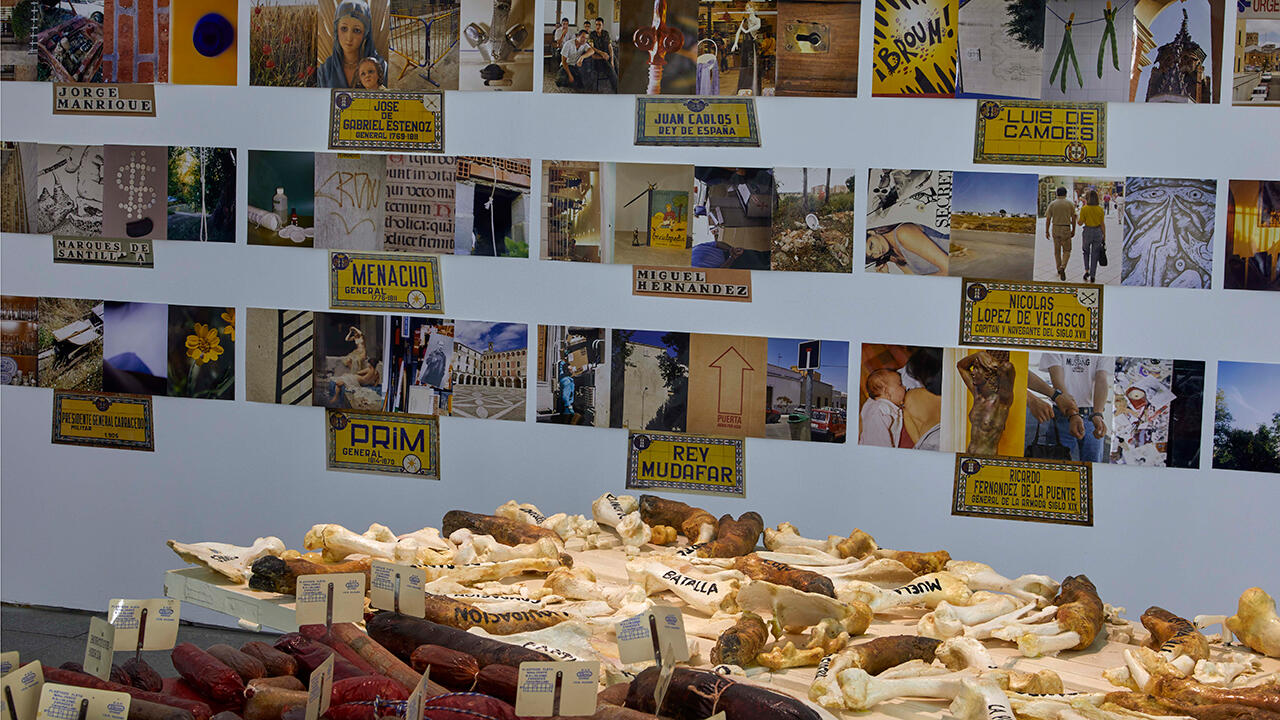Rogelio López Cuenca
Galería Juana de Aizpuru, Madrid, Spain
Galería Juana de Aizpuru, Madrid, Spain

Aby Warburg’s vast and visionary Mnemosyne Atlas (1924–29) was an attempt to chart the way forms and patterns endure in art and visual culture; the way they surface and resurface across temporal and geographical divides. In a sense, it established a kind of trans-cultural visual lexicon rooted in the nether regions of the human psyche. In its (still unfinished) form at the time of Warburg’s death in 1929, the Mnemosyne Atlas consisted of a panoply of reproduced images, organized taxonomically and presented in clusters and sequences. Long-since destroyed and known today only through documentary photographs, it has captivated artists and historians ever since: a fascination that has only intensified in our age of proliferating images.
Rogelio López Cuenca’s exhibition, and current body of work, ‘Opium Pop’, borrows its working method from Warburg: López Cuenca juxtaposes and sequences iconic images – at times photographic enlargements, at others oil paintings and digital prints of his own making – in an attempt to tease out underlying visual patterns. Where Warburg sought to reveal the ongoing ‘afterlife of antiquity’ in Western visual culture, here López Cuenca – who lives and works in southern Spain, and whose work often adopts a politically engaged position – is concerned more narrowly with Christian imagery and the way it perdures in various current-day idioms: in the seductiveness of consumer culture; in the blare and gore of mass-media news and entertainment; in the everyday, post-verbal insignia of public design; and in iconic works of modern and contemporary art.

In Mani legate / Tenaglia / Croce I (Hands Tied / Tenaglia / Cross I, 2016), López Cuenca presents a sequence of three none-too-ambiguous images: an enlarged fashion advertisement of a curvaceous female’s nude backside, the model’s hands bound suggestively behind her back; a graphic design-like rendering of a pair of pliers, painted in oil on canvas; and a Piet Mondrian grid of two intersecting, cross-forming black lines. Another nude female backside (this time caressed by a leather whip) figures prominently in Frusta / Chiodi / Cuore (Whip / Nails / Heart, 2016), where it forms part of a triptych that includes a schematic rendering of a bunch of carrots and a photograph of a scarlet heart graffitied onto a crumbling wall. The references to symbols from the Passion of Christ are overt throughout ‘Opium Pop’ – the cross, the bound hands, the scourge – although the titles supply a secondary level of clues: for instance, pointing to the likeness between the aforementioned (and otherwise incongruous) carrots and the nails that affixed Christ to the cross. In addition, ‘Opium Pop’ includes a pair of videos composed of sequences of overlapping still images, reinforcing the collage-like effect sought by López Cuenca.
Despite the exhibition’s semi-academic approach (including an artist’s statement that glosses the early Christian church’s use of pre-existing agrarian symbolism in order to establish a ‘corporate identity’ and carry out ‘one of the most successful marketing campaigns in history’), the imagery of ‘Opium Pop’ strikes a different tone: acerbic and mocking; at times puerile, at others heavy-handed, but always direct. The iconography and iconology of mass media and pop culture are not recondite or arcane practices. Regardless of their provenance, these images are ours and increasingly define us.























